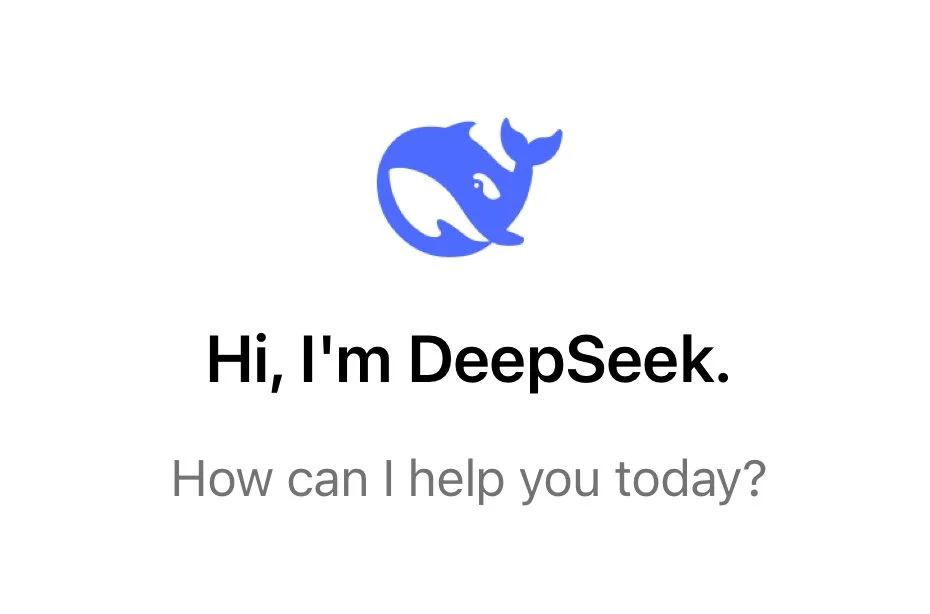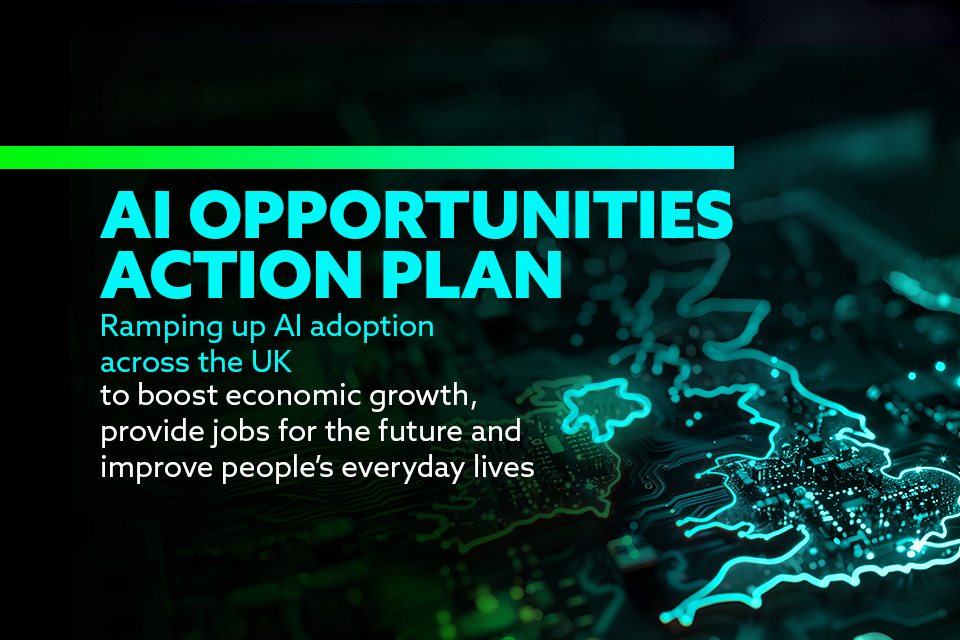How Deepseek’s Open-Source AI is Changing the Industry
Deepseek AI has landed and disrupted BigTech’s current iron grip on AI and GenAI and how businesses worldwide see, perceive and use it.
For the past year, the established narrative has been that AI is just a game for Big Tech. It is centralised and the only option for companies that want to unlock the value of their data. Open source is seen as limited in scope and innovation. This view is very wrong.
Thanks to Deepseek and its R1 model’s impact, we now see a disrupted artificial environment ready to challenge companies like OpenAI’s ChatGPT, Microsoft’s Copilot, Google’s Gemini, Anthropic’s Claude, Meta’s Llama, and Mistral.
Yet, this disruption, while it creates and unlocks many opportunities, also poses technical and reputational risks.
Make no mistake: The narrative has changed, and Big Tech will work hard to challenge it to maintain the necessary control and sell its LLM to governments and companies.
Open-source alternatives like Deepseek now offer the market alternatives, highlighting that AI isn’t just a tool that can be built and used by enterprise-sized organisations.
This disruption will turbo-charge the development, adoption and usage of AI.
Worth listening to this Bloomberg In The City Podcast for great insight.
How Deepseek has disrupted the AI narrative and landscape
Until a few weeks ago, the AI and GenAI landscape and narrative were all about AI being a game only for BigTech—OpenAI, Google, Microsoft, and Meta. These companies controlled the majority of cutting-edge AI research, applications and the necessary computing power, creating a perception that only entities with deep pockets, substantial venture backers, and massive computational infrastructure could meaningfully participate in AI innovation and deliver change and transformation to businesses.
The control that these companies had enabled them to keep clients locked into ecosystems like Azure, Google Cloud, or OpenAI’s API services.
Challenges and Disruptions Posed by Open-Source LLMs
Open-source LLMs are democratising access to advanced AI capabilities, enabling a broader spectrum of organisations to develop and deploy sophisticated AI applications.
For example, DeepSeek’s R1 model has demonstrated performance on par with leading proprietary models and was created at a fraction of the cost and computational resources. This, of course, was only possible because of how Deepseek used the established model to train its own.
In a post on LinkedIn, Reuven Cohen gives a great description, highlighting how:
DeepSeek’s efficiency breakthrough dramatically lowers AI development costs
Open-source innovation lowers barriers and disrupts market power
Their thinking and strategy is potentially disrupting this AI industry, creating a threat to to Nvidia’s dominance
Equally, Jan Beranek, whom I met and spoke with last week makes some great points on how open source is delivering great innovation.
Kevin Buehler, a Senior Partner at McKinsey, a former client and a leader in this space shares some comments on Dario Amodei’s shared views.
Deepseek has forced established AI companies to reassess their strategies, focusing on efficiency and innovation rather than sheer computational power. This has affected the valuation of companies like NVIDIA.
However, the rise of open-source LLMs has also introduced several challenges that companies large and small need to consider:
Intellectual Property and Data Security: These models' open-source nature increases the risk of intellectual property theft and misuse, an issue for every data owner. Open source also enables the creation of potential applications for malicious activities.
Market Volatility: The rapid adoption of open-source models has led to significant market fluctuations. Following DeepSeek’s R1 release, major tech companies experienced substantial valuation declines, with NVIDIA losing nearly $600 billion in market value in a single day. Not just that, but investors will ask more questions about the associated costs of delivering AI solutions.
The location where their data is hosted and associated risks: Have you read the T&Cs of each GenAI or AI platform? You should. Reading the terms and conditions, something that sadly too many ignore gives you an idea of what you give up for the efficiency and cost-benefit you gain. For Deepseek, data is held in China. Not just that, but concerning any dispute, Deepseek states that “the establishment, execution, interpretation, and resolution of disputes under these Terms shall be governed by the laws of the People's Republic of China in the mainland.” In the current geopolitical world that we live in, this is a factor that companies will need to factor in.
Risks and Opportunities for Companies and Governments
Open-source LLMs, though, present huge opportunities that require careful consideration:
Regulatory Challenges: Governments must navigate the complex task of regulating AI to ensure safety and ethical standards without stifling innovation. The European Union’s Artificial Intelligence Act, establishes a comprehensive legal framework for AI systems, categorising them by risk levels and imposing corresponding obligations. Meanwhile, the US currently lacks a federal AI law, instead relying on voluntary commitments from AI companies and sector-specific guidelines.
Economic Opportunities: Open-source LLMs can drive economic growth by lowering barriers to entry, fostering innovation, and enabling small and medium-sized enterprises to leverage AI capabilities. IBM’s 2024 study found that 51% of businesses using open-source tools reported positive returns on investment, compared to 41% of those not utilising such tools.
How Governments, Businesses and Investors Can Navigate the AI Ecosystem
The global AI landscape is defined by distinct geopolitical zones, each adopting a unique approach to AI regulation, development, and deployment.
In the United States, AI innovation is primarily driven by the private sector, benefiting from a relatively hands-off regulatory environment that encourages rapid technological advancement. They focus on innovation at pace because of the quarterly cycles businesses and investors work to. China, in contrast, operates within a state-controlled AI ecosystem, where significant government investment and oversight shape the direction of AI research and application. Meanwhile, Europe and the United Kingdom prioritise ethical AI, implementing stringent data protection laws and comprehensive regulatory frameworks to ensure transparency, fairness, and accountability.
The rest of the world—particularly emerging markets—is leveraging and looking to adopt open-source AI to reduce reliance on foreign technology, foster domestic innovation, and drive economic growth. These diverse approaches highlight AI's growing regionalisation and the need for businesses and governments to develop strategies tailored to each geopolitical landscape.
Understanding these regional differences is critical for companies seeking expansion, policymakers aiming to regulate AI effectively, and investors looking to capitalise on and support the global AI boom.
To effectively navigate the evolving AI landscape, the following strategies are recommended:
For Governments:
Develop Adaptive Regulatory Frameworks: Establish policies that balance innovation with ethical considerations, ensuring that AI development aligns with societal values and safety standards.
Invest in AI Literacy and Workforce Development: Implement educational initiatives to establish in the workforce the necessary skills for the AI-driven economy that will take control of the global economy. Continuous learning and adaptation are a must now, with governments needing to incentivise businesses to help the workforce become more productive through access to AI. We need to see AI not as technology efficiency - technology will take my job, but more as technology that will help me improve.
Promote International Collaboration: Engage in global partnerships to harmonise AI regulations and share best practices, facilitating a cohesive approach to AI governance. Geopolitically, we see emerging markets come together as a block and trust specific economic entities more than others.
For Businesses:
Embrace Open-Source Collaboration: Leverage open-source LLMs to enhance innovation, reduce costs, and avoid vendor lock-in while contributing to the open-source community to foster goodwill and shared advancement. Don’t just think of your organisation's data; instead, audit and identify data across your supply chain and environment. Collaboration can improve how services and products can be created, delivered, and bought.
Implement Robust Data Governance: Establish comprehensive data management policies to ensure security, privacy, and compliance with evolving regulations, thereby building trust with stakeholders. Don’t just think of this from a legal point of view but from a trust and reputation perspective. Where there is trust, companies can increase adoption and the value of their own companies. Transparency, communications and stakeholder engagement are critical here. When I worked within the Department for International Trade’s (Department for Business and Trade now) Digital, Data and Technology Directorate, we focused monthly on publishing data on engagement on the trade platforms our teams built. Our departmental statistics team continuously verified this data. Nothing was published without their sign-off.
Engage in Transparent Communication: Clearly articulate AI strategies, capabilities, and limitations to stakeholders, fostering trust and managing expectations. Building trust takes time, but it helps deliver innovation, build reputation, and unlock growth.
For Investors:
Assess Technological Viability: Evaluate the potential of open-source LLMs to disrupt existing business models and identify investment opportunities in companies effectively leveraging these technologies. Ensure your investment teams are constantly plugged into the networks where innovation happens. Think strategically and look at the possibilities and the potential to disrupt. Equally, look at what strategy and communications support new AI companies seeking investment for growth. Tactical communications are, for now, strategic counsel and communications, which help reduce and manage risk while adding value.
Monitor Regulatory Developments: Stay informed about global AI regulatory changes to assess their impact on investments and adjust strategies accordingly. The world economy is splitting into regions, yet the technology that connects us can still be global. Ensuring that innovation in one market can deliver value in another requires a regulatory understanding of that environment and jurisdiction.
Diversify Investment Portfolios: To mitigate market volatility and technological disruption risks, consider investing in various AI applications and industries, as well as the associated companies and sectors that support the growth of AI companies, such as energy.
Conclusion
The ascent of open-source LLMs like DeepSeek’s R1 signifies a pivotal shift in the AI industry, presenting challenges and opportunities.
Governments, businesses, and investors can harness the transformative potential of open-source AI while mitigating associated risks by developing adaptive policies, embracing collaborative innovation, and engaging in transparent stakeholder communication. This balanced, strategic, entrepreneurial approach will be crucial in navigating the complex and evolving AI landscape, ensuring sustainable growth and ethical advancement.





